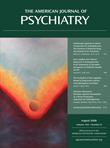Despite its breeziness, this book will be of interest to some psychiatrists. The author, a neuroscientist and the son of a psychoanalyst (and thus perhaps is himself something of an emblem of our times), is a professor of neuroscience at Johns Hopkins University. His survey of recent advances in brain biology may be interesting and useful to psychiatrists trying to keep up with brain research and interested in its relevance to the interaction of nature and nurture and to biopsychosocial understanding. Psychiatrists may also be stimulated by the author’s educated undermining of the fairly common and widespread misunderstanding that brain functioning is clear and elegantly designed.
The book addresses seminal topics such as evolution, sensation, emotion, learning, memory, individuality, love, sex, sleeping, dreaming, and religious impulses; this is a stimulating but also fairly overwhelming list, to all of which he brings an impressive array of neurobiological curiosity and research. He stresses interconnections and the drawbacks built into advances and advantages. To psychiatric readers, who are perhaps used to seeing the brain largely as a world of synaptic clefts for psychopharmacological neurotransmitters, he broadens and reopens our minds to a wider complexity of basic structure and function. He discusses genes, cell structure, membranes, pumps, messengers, facilitation and inhibition, spikes, synapses, and recycling. He occasionally reminds the reader of basic guiding principles such as 1) higher functions tend to occur at the top and forward parts of the brain, 2) the brain is built like an ice cream cone, with added scoops, and 3) localization of function is straightforward for basic subconscious reflexes and fairly straightforward for the initial steps of sensation, but far more difficult for more complex phenomena such as memory or decision making. He gives evidence for interconnectedness, such as between perception and emotion or sensation and motor function. He discusses how various high brain functions are built on memory and emotion. He gives evidence for the complexity of memory and its tasks.
After chapters on brain assembly; sensation and emotion; learning, memory, and individuality; sleep, dreams, and their possible functions; and sex, love, and some of their varieties, he turns to the religious impulse. Though some of his points here, as elsewhere, seem to me at the edge of reductionism, he does propose and discuss a potentially important neurobiological contribution to the lively and odd topic of the roots of religion—that the human brain, which has become particularly adapted to creating gap-free stories, predisposes us to religious thought.
Overall, this book tackles important and challenging current neurobiological approaches to understanding the brain and the mind, which will make it a useful book for some psychiatrists to read. However, the breeziness of the book, perhaps designed to make it more accessible to readers, ultimately undermines its reliability. This thoughtful neuroscientist’s book about brain evolution, structure, and function, which places refreshing emphasis on some relatively messy and ad hoc qualities of brain evolution and on the inefficiencies of brain design and function, seems to me significantly flawed by its frequently brash and breezy style.
For example, the last words of the introduction are “let’s roll.” The author is fond of words such as “downer” and “cool.” On the acknowledgements page, after one name there are parentheses containing the word “Mom!”, and after another name later on, parentheses containing the word “Dad!”. The book’s breathless subtitle—perhaps added by the publisher, but in tune with the author—is “How Brain Evolution Has Given Us Love, Memory, Dreams, and God.” On the other hand, in all fairness, some of the author’s catchy formulations seem to me clear and apt, such as a couple of the chapter titles: “Building a Brain With Yesterday’s Parts” and “The Unintelligent Design of the Brain.”
Clear, precise, and modest language in scientific writing is often taken for granted, but as this book’s awkwardness reminds us, this is not a casual or superficial custom. Sliding into hyperbole or cuteness will probably dissuade many scientists and educated readers from looking at this book, though those qualities may conceivably gain some teenage and television attention. I was distracted by the thought that the book itself seemed to me somewhat like a hardworking and educated youngster in bright would-be-cool clothes that do not quite fit.

